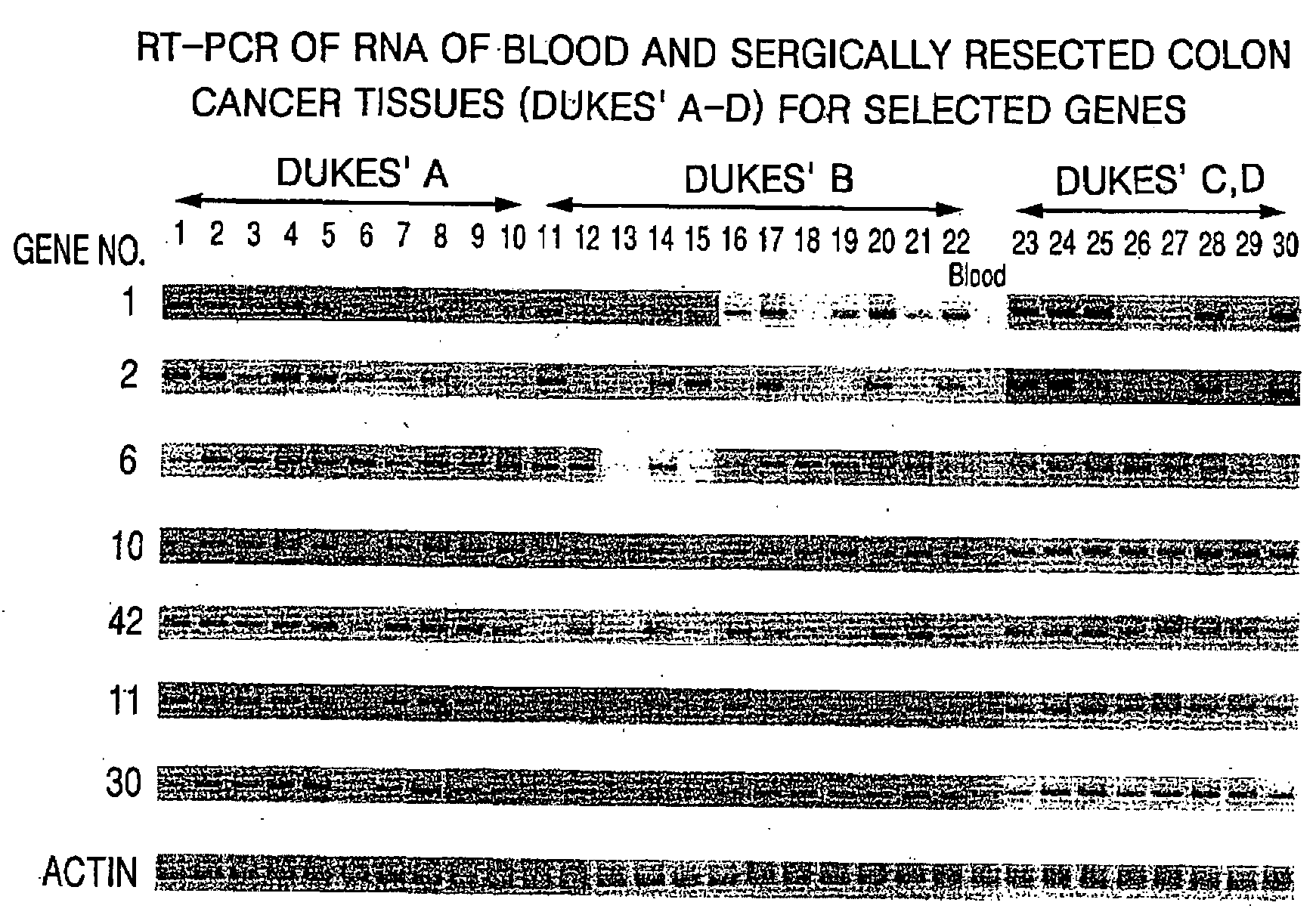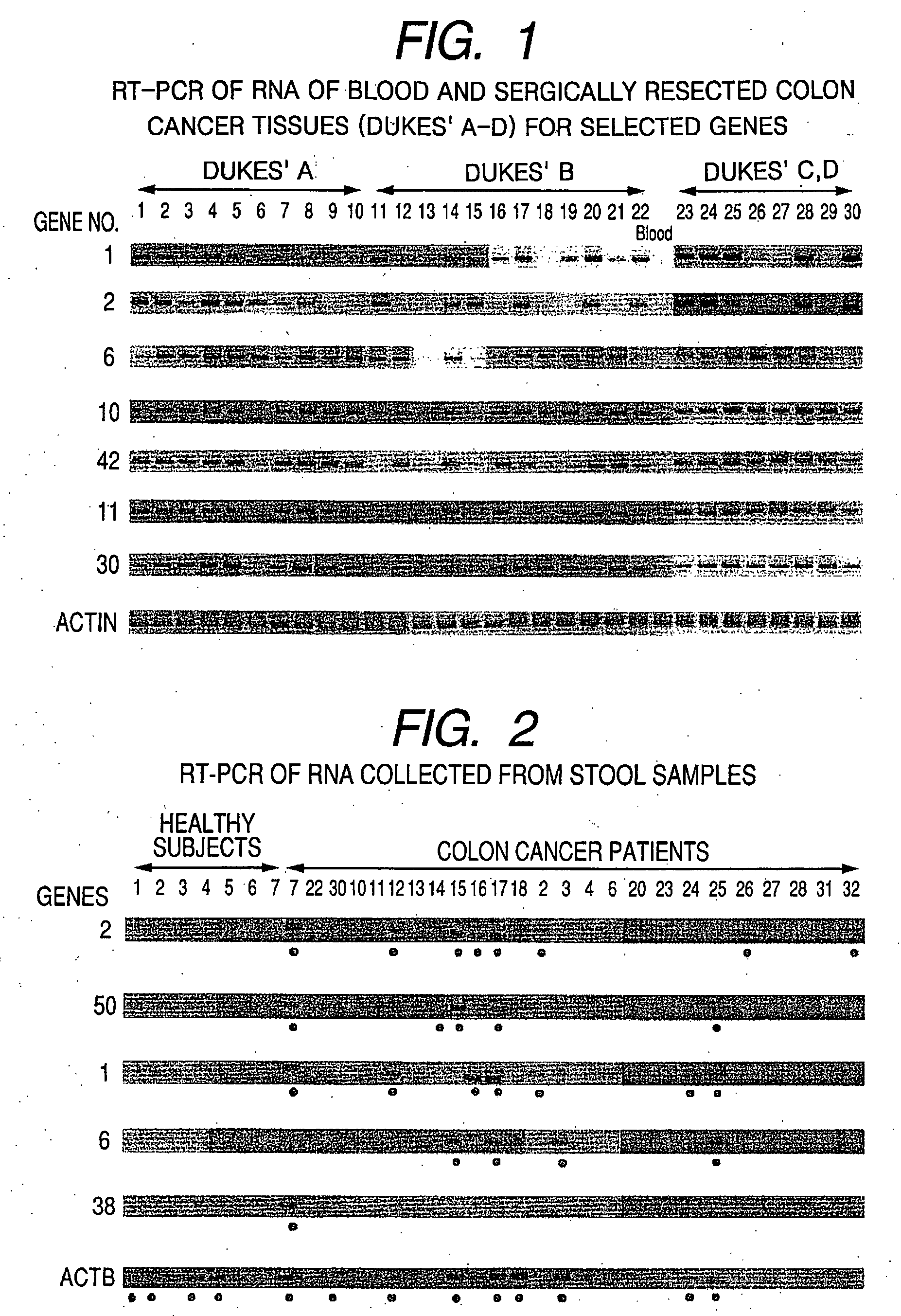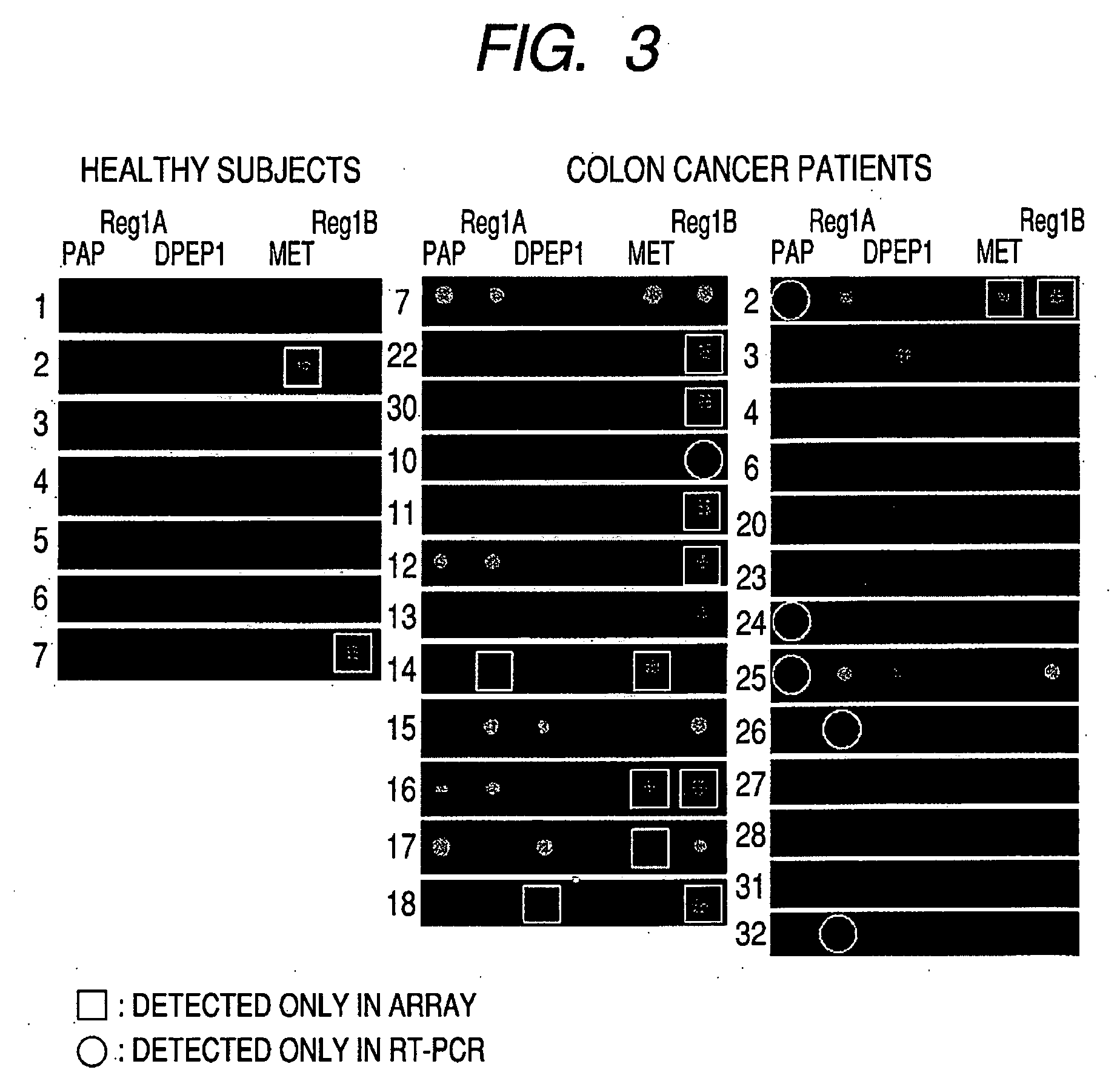Method for screening colon cancer cells and gene set used for examination of colon cancer
a colon cancer and gene set technology, applied in the field of colon cancer early detection methods, can solve the problems of inability to resection, inability to resection, and inability to resection, and achieve the effect of high precision
- Summary
- Abstract
- Description
- Claims
- Application Information
AI Technical Summary
Benefits of technology
Problems solved by technology
Method used
Image
Examples
example 1
Selection Step 1
Primary Selection of Marker Genes for Colon Cancer Screening
[0061](1) Total RNA Extraction
[0062]Peripheral blood, 6 cases of normal tunica mucosa coli, 6 cases of early colon cancer tissue (Dukes' A, B) and 19 cases of advanced colon cancer tissue (Dukes' C, D) were collected, and total RNA was recovered. Recovery of total RNA was conducted according to the usual methods, and the following method was conducted.
[0063]First, each tissue sample was crushed (peripheral blood was used as it is), and ISOGEN from Nippon Gene Co. was added, and this was homogenized. A small amount of chloroform was added. This was centrifuged at 8000 rpm for 15 minutes. The supernatant was collected, and an equal amount of isopropanol to the collection amount was added. This was incubated for 15 minutes or longer at room temperature. This was centrifuged for 15 minutes at 15000 rpm, and the pellet was collected. Then, with ethanol precipitation (70%), the total RNA was obtained.
[0064](2) Obt...
example 2
Optimization of the PCR Conditions for the 50 Selected Genes
[0068](1) Reverse Transcription (First Strand Synthesis)
[0069]With 5 μg of the total RNA of the advanced colon cancer tissue obtained in Example 1, reverse transcription was conducted with a random hexamer primer using SuperScript Choice System from Invitrogen. The following is a more concrete description of the method.
[0070]The total RNA was adjusted to a concentration of 10 μg / 10 μl. To this, 1 μl of random hexamer primer was added. This was heat denatured by incubation at 68° C. for 10 minutes. This was rapidly cooled by placing on ice for 2 minutes or greater. Next, the reagents shown in Table 3 were added. This was incubated for 25° C. for 10 minutes, 42° C. for 60 minutes and 68° C. for 15 minutes. Afterwards, this was cooled rapidly and after spinning down, 1 μl of RNase H was added, and this was maintained at 37° C. for 20 minutes. In this way, approximately 20 μl of 1st strand cDNA solution was recovered.
TABLE 3Rea...
example 3
Selection Step 2
Secondary Selection by RT-PCR of the 50 Genes
[0077]Cells separated from stool by MACS (magnetic cell sorting) which uses epithelial cell specific antibody (Dynabeads Epithelial Enrich, Invitrogen International) (this is described in detail in 1 of Example 6) hardly contain any lymphocytes or red blood cells. As a result, the 50 genes selected in the selection step 1 are genes that are effective for colon cancer screening of these separated cells. On the other hand, in order to conduct screening by extracting RNA directly from stool, a further selection for genes which are not detected in lymphocytes and red blood cells is needed.
[0078]As with Example 1, total RNA was extracted from another 22 cases of Dukes' A, B and 8 cases of Dukes' C, D and from peripheral blood. In order to understand the characteristics of the 50 genes, RT-PCR was conducted by the following method.
[0079](1) Reverse Transcription Reaction (Synthesis of Single Stranded cDNA)
[0080]Using SuperScript...
PUM
| Property | Measurement | Unit |
|---|---|---|
| pH | aaaaa | aaaaa |
| size | aaaaa | aaaaa |
| concentration | aaaaa | aaaaa |
Abstract
Description
Claims
Application Information
 Login to View More
Login to View More - R&D
- Intellectual Property
- Life Sciences
- Materials
- Tech Scout
- Unparalleled Data Quality
- Higher Quality Content
- 60% Fewer Hallucinations
Browse by: Latest US Patents, China's latest patents, Technical Efficacy Thesaurus, Application Domain, Technology Topic, Popular Technical Reports.
© 2025 PatSnap. All rights reserved.Legal|Privacy policy|Modern Slavery Act Transparency Statement|Sitemap|About US| Contact US: help@patsnap.com



